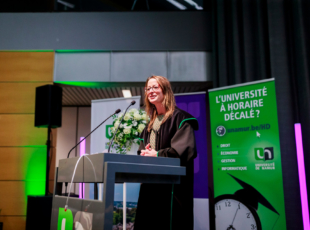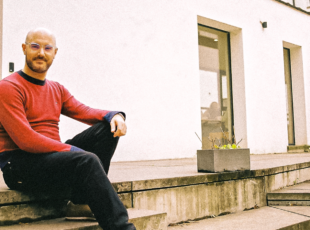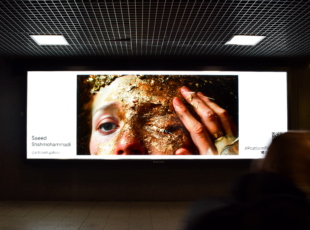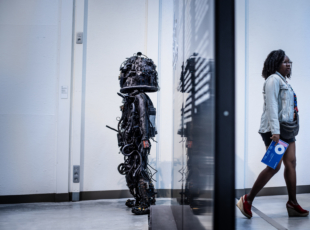Through the camera lens, modern and political bodies
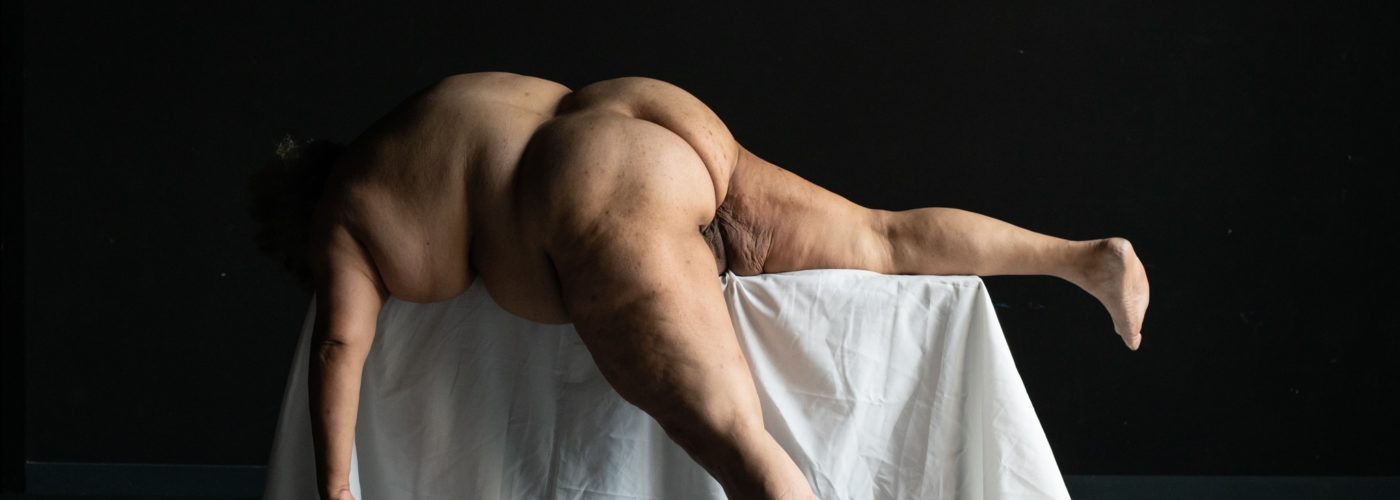
Article author :
Standardised, weighed, measured, worked on, claimed, performed, damaged… The body is the site where all our battles are waged, amongst other social, aesthetic and moral diktats. To understand their impact on our bodies, the gaze of the Brussels photographer Laurent Poma is currently settling on every body type in order to render visible those absent from our visual fields.
‘The body is the most political and the most public thing there is,’ argued the transgender and feminist philosopher, Paul B. Preciado, in 2019. Michel Foucault had earlier spoken of the ‘bio-power’ being deployed against individual bodies from the eighteenth century onwards. A power which is deployed through government policies, medical practices and discourses on health, food and sexuality which aim to standardise the behaviour of each person to produce a population which is healthy, productive and conforms to established norms. For Foucault, the body is thus not solely a biological object but in fact also a political one, because it is subjected to an ensemble of powers and technologies of social control. Fertile ground on which relationships of domination can be enacted.
Many are the thinkers who have theorised the body and its political significance. Several amongst them, such as the aforementioned philosopher Foucault, have inspired Laurent Poma in his photographic research work entitled ‘Modern Bodies.’ Neutral settings, soft lighting which is altered as little as possible, static naked bodies which, through their posture or their gaze, freed from any eroticisation, are a testament to a life’s journey, as is their encounter with the photographer. ‘Standardised beauty doesn’t interest me,’ points out Laurent Poma. ‘Each body is affecting. Through the dialogue I have with the models, I try to persuade them to loosen the control they have over their bodies. Some of them have told me that they had the impression of being alone, face-to-face with themselves during the photo shoot. I have also realised that the bodies which seem closest to social and aesthetic norms are not always the most uninhibited. Once it is in front of the camera, a thin or sculpted body can be stripped of its assured poise at the same time as it removes its clothing.’
The image taker avows himself influenced by the American photographers Robert Mapplethorpe – known amongst other things for his black-and-white photographs of male nudes – and Joel-Peter Witkin, whose compositions staging dismembered or deformed bodies have often been controversial, but enable an exploration of universal themes such as beauty and suffering. The photographer-artist enjoys working in premises which were not especially designed for photo shoots. Outside the studios, he takes photographs by working as far as possible in concert with natural light, or by lighting the scenery in such a way that it can be reproduced. ‘I really wanted to be able to transpose this shooting process wherever I wanted so that the work is set up solely between the camera, the model and myself. With additional lighting, stands for flash photography, which in addition to being cumbersome are noisy, the relationship with the person during the shoot is very different.’
Outside prescribed norms
As we mentioned in a recent Weekly published on kingkong, the Brussels photographer does not have a background in posed nude photography, but instead one in documentary photography, which he for that matter teaches at the Institut des Hautes Études des Communications Sociales (IHECS). His partner, Alexia Zoina, assists him in the promotion of the research-image project and encouraged him to get started on the idea after a photo shoot. But the La Louvière inhabitant also has a critical perspective on bodily norms. ‘I have a body which does not match prescribed norms. I relate to issues concerning being overweight, and up until recently I wasn’t really conscious of the fatphobia I have endured and which I am still subject to.’
The cause of several forms of discrimination, systemic especially in fields such as health, employment and education (de facto limiting opportunities and resources for overweight people), fatphobia can also leave its mark in a form just as violent, both verbally and physically: fat shaming. That is to say the act of criticising, even ridiculing, people because of their excess weight. A behaviour, needless to say, experienced as humiliating and degrading, and not without having an impact on the mental health of the people targeted.
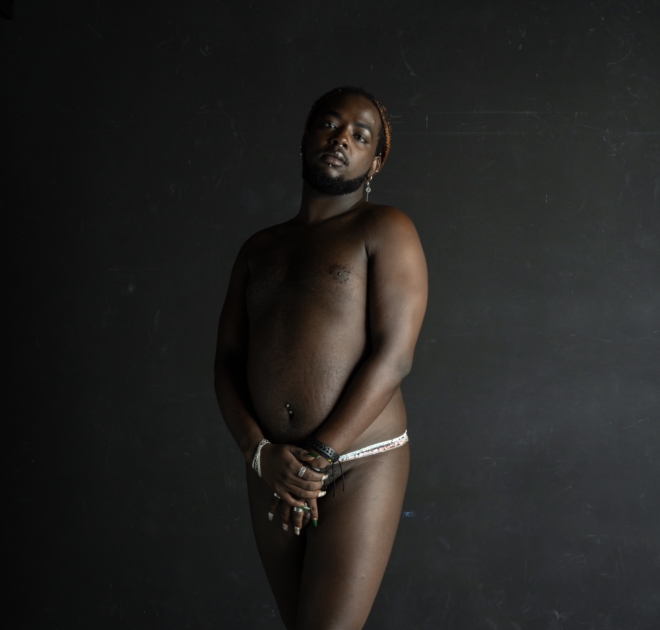
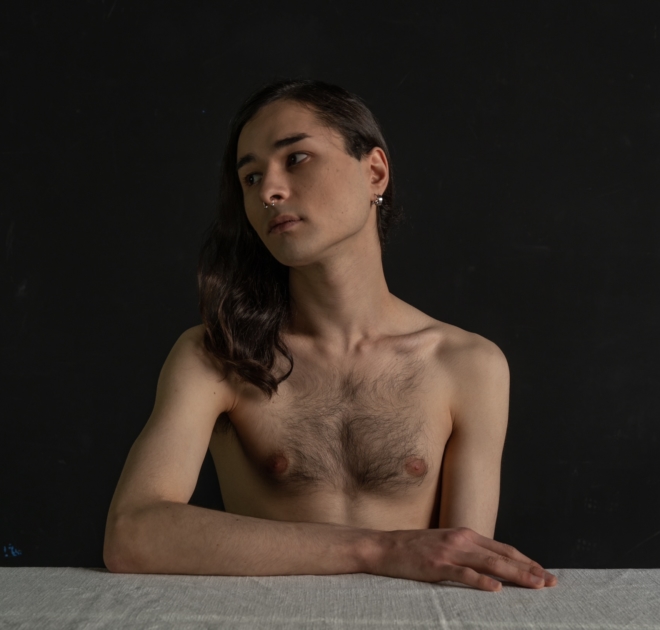
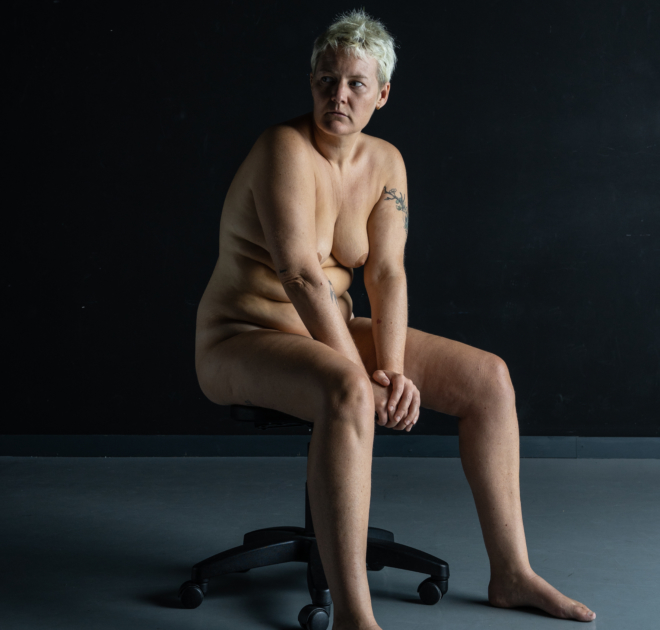
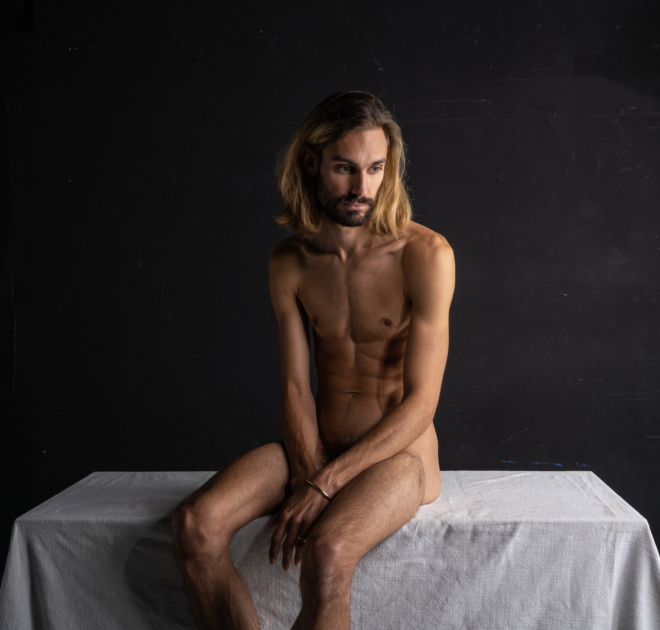

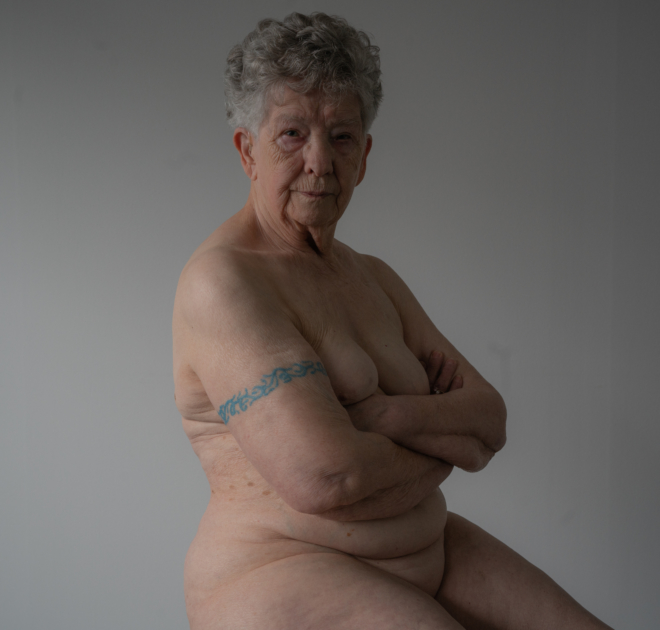
If her personal journey allows her to now feel comfortable with her body as it is, Alexia hadn’t realised that, unwittingly, an even more surprising label had been attached to her. ‘Being an overweight woman, I came to understand that the society around me had labelled me a “chubby woman at ease with it.” Because in life it is true that I especially like to accentuate my femininity, to play up my looks, my curves. This femininity and my body, which does not fit prescribed norms, today give me a voice which other people do not have. As if society is now granting me an almost militant, non-conformist position, because my body is different to others and because I appear sure of myself.’
‘Up until now, I haven’t yet had a male model who ticks the box marked heterosexual white man aged 50. Nevertheless, supposed normality is not uninteresting.’
Laurent Poma
On the social networks, the word is continuing to spread to help those for whom accepting the body in day-to-day life is still a standardised battle. Amongst other Instagram accounts of the type, @corpscools is continuing the fight against fatphobia, offering in particular resources to think about corpulence, which is still not made visible enough, and undertaking essential intersectional reflections on subjects such as corpulence and limiting beliefs, corpulence and racism, discriminations in the workplace, etc. The Instagram account set up by Fat Friendly, a Brussels association which campaigns for the rights of fat people, regularly asks provocative questions, such as ‘Is the fat body a fortress body?’ At the same time displaying the bodies which do not meet prescribed norms of women, men and transgender or non-binary people. ‘It is true that up until now, I haven’t yet had a male model who ticks the box marked heterosexual white male aged 50,’ laughs the Brussels photographer, on realising that he fits into this category. ‘Nevertheless, supposed normality is not uninteresting, either.’
Continually looking for models to create photographic exchanges and conversations, without for all that becoming a photo shoot service, the research-image project also has the aim of settling into locations. Be they exhibitions or residencies. Another means of reaching out to more diversified audiences. ‘The majority of the models come to me by word-of-mouth, or via the project’s Instagram account,’ explains Laurent Poma. ‘Ideally, I would also like to get involved with organisations or the voluntary sector to be able to work with vulnerable, at-risk members of society or people with disabilities. Or even reach out to certain professions which transform our bodies, where the body has an eminently central role, such as sex workers.’ The photographic research project ‘Modern Bodies’ could be an endless task, but the photographer explains that he moves forward one chapter of reflection at a time, and that the project is still in its infancy.
An opening exhibition of ‘Modern Bodies’ is being held until February 24 in La Louvière, at the Quartier Théâtre. A former school which is used as a rehearsal and creation space for various La Louvière non-profit organisations, overseen amongst others by the cultural centre of this Hainaut municipality. If the mood takes you, you therefore only have a few days left to go and have a look at the project’s first series of images.
A story, projects or an idea to share?
Suggest your content on kingkong.

